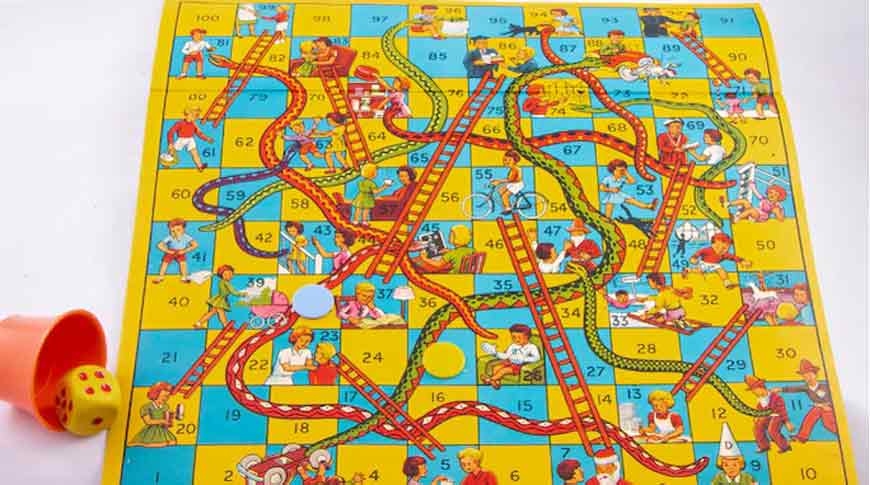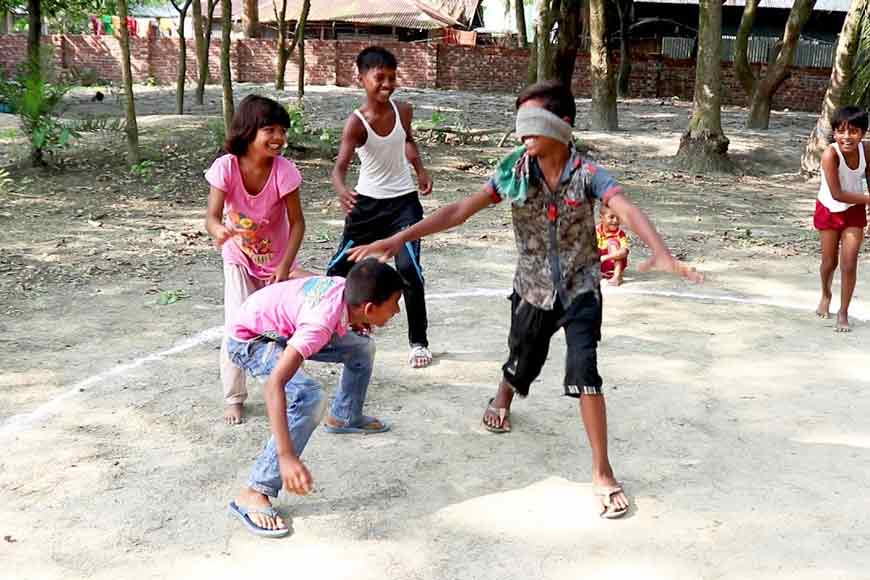Animal names, and the games we play

Bagh Bandi
We don’t know if you have ever played it, or even heard of it, but Bagh Bandi is a two-player strategy board game which has its origins in southern Bengal. With a name like that, which literally means ‘captured tiger’ in Bengali, it is obviously a hunt game, specifically a tiger hunt game where a certain number of tigers attempt to elude and capture goats while the goats attempt to surround and trap the tigers. A variation of the game is called Bagh Chheli in northern India and Sher-Bakr in Punjab.
The game is played in turn between the tigers and the goats, with no luck factor involved. The number of tigers may vary between one and five. The initial number of goats increases with the number of tigers. The goal of the herd of goats is to trap the tiger so that it cannot move any more, while the tiger tries to kill or escape. For those interested, the game is now even available in a mobile version from whichever app store you use. Today, International Tiger Day, is a good excuse to start playing!
As an actual physical sport as opposed to a board game, tiger hunting decimated India’s tiger population in the 19th and first half of the 20th century. In January this year, Indian Forest Service officer Parveen Kaswan tweeted a document titled ‘Dangerous animals destroyed in British India during the year 1878’, showing how the British-Indian government officially killed 1,579 tigers in a single year. The document clearly shows that the highest number of tiger casualties occurred in Bengal (426), followed by Assam (375).
Yes, tiger hunting used to be a royal sport in India for centuries before the British arrived, but it is also a fact that tigers were not a threatened species up to the first decades of the 20th century. In the 100 years that have followed, hunting and habitat loss reduced their population in India from 40,000 to less than 1,800, with a current population of around 2,960 thanks to prolonged conservation efforts by successive governments. Obviously, the years of British rule caused far more damage owing to the availability of superior firepower, and the eagerness on the part of Indian aristocrats to facilitate a hunt for the ‘sahibs’.
 Snakes and Ladders
Snakes and Ladders
Bagh Bandi is not the only animal themed game we play. Did you know, for instance, that Snakes and Ladders, which many probably think is a Western import, actually dates back to 2nd century BC India? The historic version belonged to a family of Indian dice board games which also included ‘gyan chauper’ (ludo) and ‘pachisi’. The game made its way to Britain courtesy British families returning home from India during the British Raj, as was evident from the décor and art of English game boards of the late 19th and 20th centuries. By the 1940s, however, very few visual references to Indian culture remained.
At its most basic, the ancient Indian original, known as Moksha Patam (or ‘patham’, possibly meaning path to moksha), was based in morality lessons, so that a player’s progression on the board represented life’s journey in the midst of virtues (ladders) and vices (snakes). Unfortunately, this negative image of snakes persists among large sections of society to this day, even though the majority of the world’s snakes are non-venomous and even those that are, use their venom to catch their prey rather than defend themselves against humans.
In Bengal, a very popular children’s game is called ‘kumir danga’ (the crocodile and the riverbank), an outdoor game which requires four or more participants, of whom one is the ‘kumir’. All the participants stay on a designated ‘danga’ while the kumir stays in the designated water. The game is all about those on the bank moving through the water without being caught by the crocodile. If anyone is caught by the kumir, it is their turn to act as the kumir.
 Kanamachi
Kanamachi
Kanamachi (literally ‘blind fly’ in Bengali, though the Western version is called blind man’s buff) is a game in which players stand in a circle and one of them becomes kanamachi, so called because a piece of cloth is tied over their eyes. The players then gradually widen the circle, and the kanamachi runs after the others trying to touch one of them, like a buzzing fly. The person who is touched has to be identified by name. If correctly identified, they become the new kanamachi, and the game goes on. An ancient Greek version of this game, by the way, is called ‘copper mosquito’.
 Chess
Chess
In general, India is home to quite a few variations of traditional animal-themed games like chess (in which the Indian ‘ghora’ has become the Western knight and ‘gaja’ or elephant the bishop), yet another ancient board game that probably originated in northwest India in the 7th century AD. This game called Chaturanga was played on an 8×8 uncheckered board, called ‘ashtapada’, and spread along the Silk Road. The four sets of pieces in ancient chess represented the army divisions of infantry, cavalry, elephantry, and chariotry, meant to protect the king and queen (‘mantri’ in the Indian version).
While games themed on animals may provide valuable environmental and conservation lessons from an early age, negative connotations attached to animals are avoidable. While animal themes in our sports and games are welcome, it is important to realise that we cannot ‘play’ with the lives of animals in reality.











